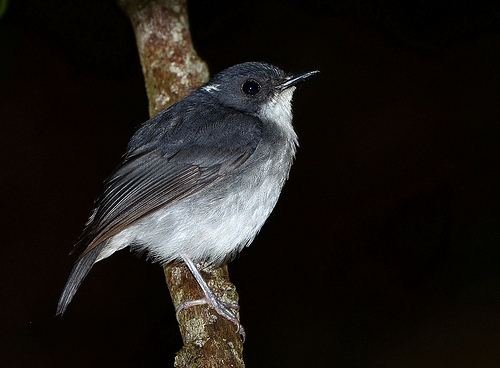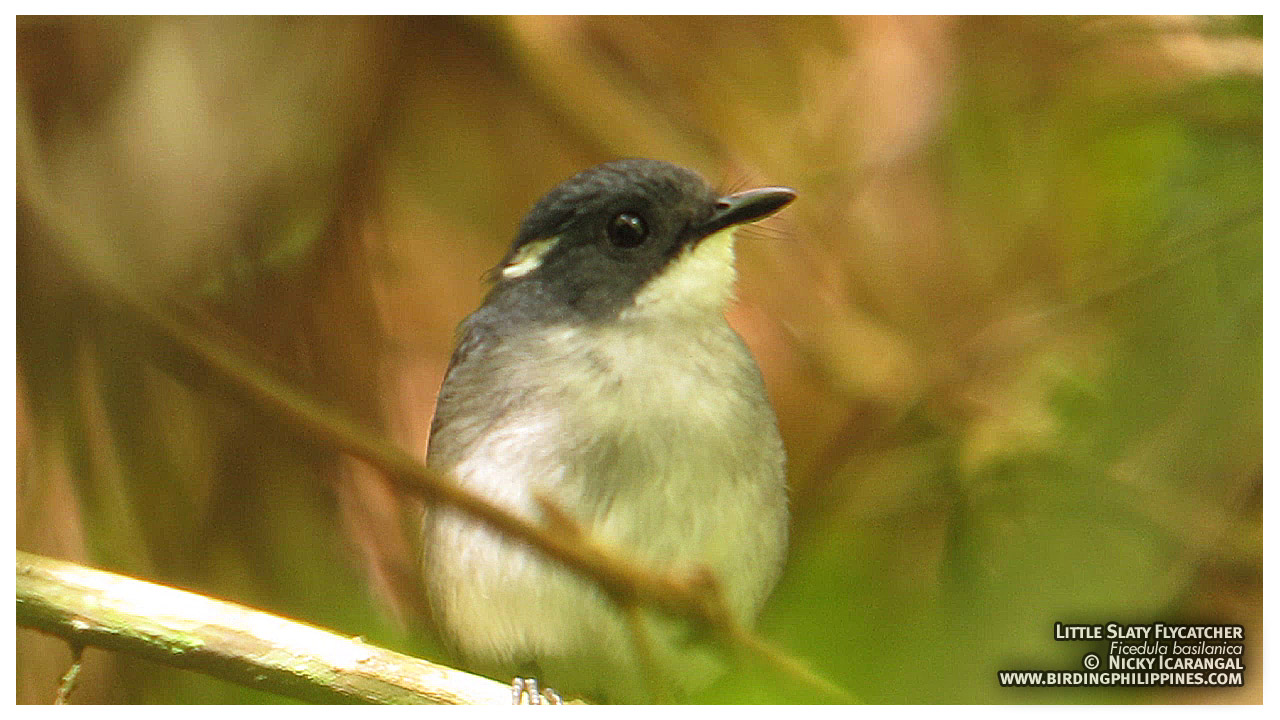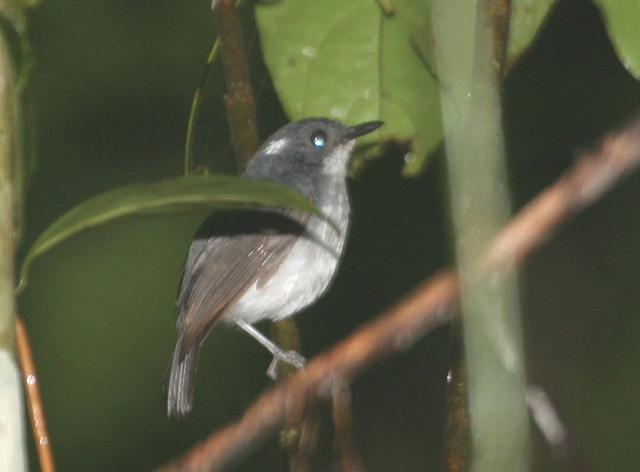
Ficedula basilanica
SUBFAMILY
Muscicapinae
TAXONOMY
Ficedula basilanica Sharpe, 1877.
OTHER COMMON NAMES
French: Gobemouche de Basilan; German: Schiefergrundschnдpper;
Spanish: Papamoscas Pizarro Chico.
PHYSICAL CHARACTERISTICS
The body length is about 5 in (12 cm). The male is colored
slate-gray on the back, head, and tail and has a white belly.
The female is more brownish.
DISTRIBUTION
Vulnerable. A rare, endemic, nonmigratory species that only
occurs on the islands of Samar, Leyte, Dinagat, Mindanao, and
Basilan in the Philippine archipelago.
HABITAT
Occurs in lowland, humid, evergreen, primary and mature secondary
tropical forest, including selectively logged areas. It selects
micro
HABITAT
within the dense forest understorey. It
occurs over the altitudinal range of sea level to 3,900 ft
(0–1,200 m).
BEHAVIOR
A nonmigratory species. Pairs of breeding birds defend a territory.
A quiet, skulking species of the forest understory. The
song is a series of warbling phrases.
FEEDING ECOLOGY AND DIET
Searches from a low perch for flying insects.
REPRODUCTIVE BIOLOGY
Builds a cup-shaped nest.
CONSERVATION STATUS
Vulnerable. A rare and declining species. Much of its original
natural habitat has been lost to the development of subsistence
agriculture, commercial plantations, logging, mining, and in
one place, a golf course. Some of its breeding habitat occurs in
protected areas, but is not necessarily safe from disturbance
there. Areas of its critical breeding habitat must be protected.
SIGNIFICANCE TO HUMANS
None known, except for the economic benefits of birdwatching.
Other popular Animals
Photo Gallery of - Little slaty flycatcher




 Animalia Life
Animalia Life